This story by Chris Douglas from the August 2019 edition of Australian Aviation asked if Australia’s police helicopter fleets were adequate to respond to a terrorist act.
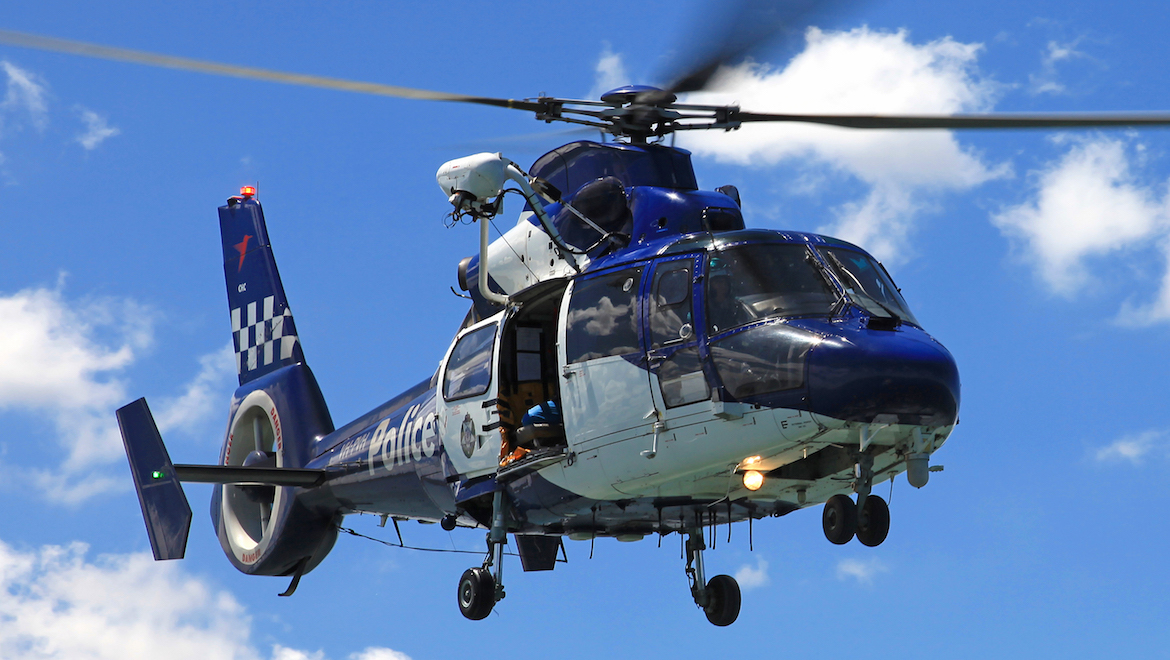
It was 1978, and I had been in the Australian Army for almost two years, joining 6th Battalion the Royal Australian Regiment at the age of 17. Exercising in the Shoalwater Bay area, the battalion was about to undertake its first helicopter night assault in Australia.
At that time, I was an anti-tank gunner equipped with the 84mm Carl Gustav anti-tank weapon when deployed by air. We trained for days in daylight but now came the big test for all of us. I remember how in total blackness, except for the lights of the choppers, we deployed onto the ground and made our way through thick bush to take up our positions in preparation for a full-scale battalion night attack. I was impressed with our leaders and our training as everything went according to plan. They were the best, with many of them veterans of the Vietnam War.
But I couldn’t help thinking at the time what the outcome would have been if our landing had been opposed by a determined enemy? The Iroquois helicopters we travelled in were Vietnam veterans themselves, but they were light-skinned, poorly equipped and vulnerable to small arms fire. Since that time, the Australian Army has had extensive experience deploying troops in helicopters under war conditions and has received extensive equipment upgrades while the air mobility needs of Australian police forces tasked to respond to incidents involving terrorism and more commonly to armed offenders, has been overlooked by all governments.
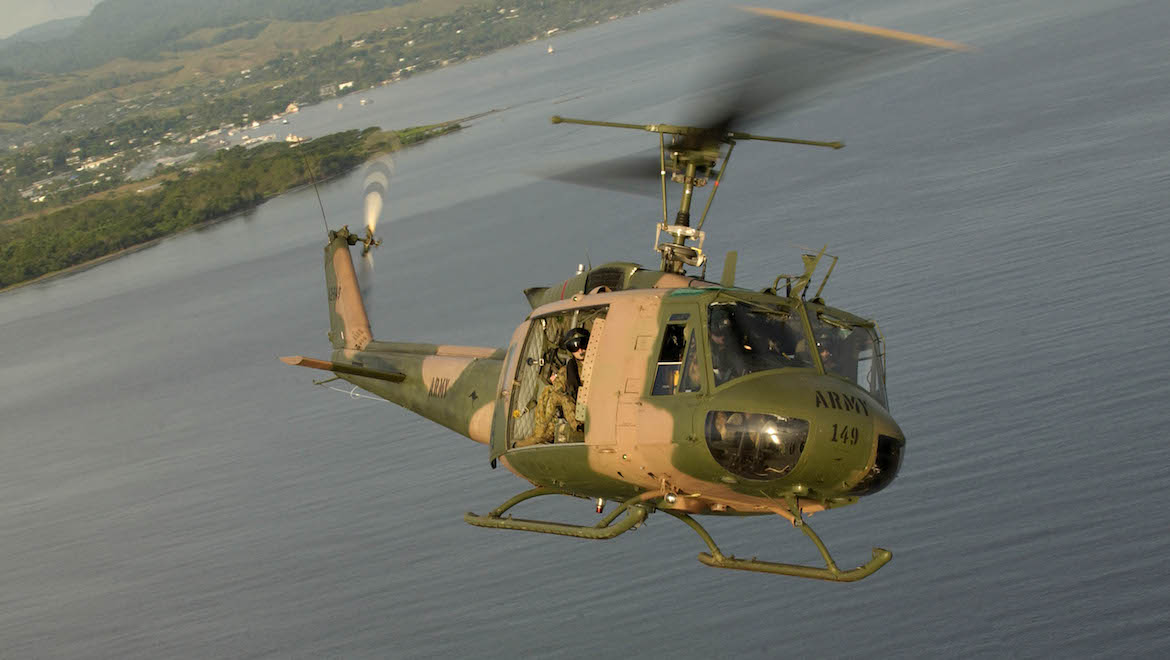
Today in Australia and globally, law enforcement agencies face a range of threats from terrorism and heavily armed offenders. Terrorism is not new. But it is constantly evolving as terrorist groups search for soft targets to attack. While lone wolf attacks present a significant threat, the risk of attack by organised terror groups is still real. It is highly probable that at some stage in Australia, police will have to respond quickly to a well-armed group of terrorists who have launched an attack in a city or major area.
The closest Australia has come to a group of terrorists launching an armed attack was in 2009, when five men connected with the Somali-based terrorist group al-Shabaab were arrested for planning to kill soldiers at an Army base.
If a group of similar size or larger launched an attack in an Australian city, it would stretch the resources of State or Territory police to arrive on the scene quickly and safely. Police counter terrorism response units are well equipped and trained and cross train with the Australian Defence Force (ADF) and other agencies. However, they lack sufficient and appropriate rotary-wing aircraft to deploy quickly.
While the Australian military is equipped and trained to handle such incidents, the location of units tasked to respond to them and the process involved in seeking their deployment does not enable them to deploy quickly to every major Australian population centre.

Current scenarios involve the military being deployed only after it has been decided that police lack the ability to successfully execute an anti-terrorism operation. And by then it might be too late.
Many of the terrorist response scenarios involve the taking of hostages, and if recent major incidents are a guide, that has not been a strategy pursued by terrorists. As recent international incidents have shown, terrorists attack quickly and attempt to inflict maximum harm and damage within the shortest possible time, knowing that they are likely to be killed by police.
It is critical in those circumstances that police have the ability to deploy quickly in relation to those incidents. A terrorist group undertaking an attack in an Australian city, where anti-terror special forces are not located, is not going to wait until the Army is deployed from Sydney or Perth to confront them. And confronting armed terrorists is only one threat. Australian police daily have to be prepared and available to quickly deploy to counter armed offenders.
Helicopters are the best aircraft for deploying armed police who are responding to situations in major built-up areas. Today, most Australian police forces operate helicopters of various types and capabilities. The aircraft undertake a wide variety of roles including search and rescue, emergency evacuation, fire duties and law enforcement operations.
But not all police forces operate helicopters – for example the Australian Federal Police (AFP), South Australian Police Force, Northern Territory Police Service and the Tasmania Police. The limited number of rotary aircraft available by those states that operate them means that state and territory police forces have at times had to share resources.

In 2011, Victoria Police provided one of its helicopters to assist the Western Australia Police with the Commonwealth Heads of Government Meeting held in Perth in 2011. Or state police rely on other agencies when their rotary resources are unavailable. For example, Air Ambulance Victoria makes a helicopter available when one of the three Victoria Police helicopters is undergoing maintenance. The South Australian Police uses an EC120 helicopter from the State Rescue Helicopter Service on an “as required” basis. And the Westpac rescue helicopter is also made available to the Tasmania Police.
In Australia, state and territory police are responsible for responding to incidents involving terrorism and armed offenders. In the Australian Capital Territory, that responsibility rests with the ACT Police, a component of the AFP.
Unlike fixed-wing aircraft or vehicles, helicopters provide police and emergency personnel with the capacity to respond quickly to high threat incidents, unrestrained from having to find an airport or negotiate traffic. They can deploy armed police close to the scene, or if the situation dictates and allows, enable armed police to egress onto a location to directly confront terrorists and armed offenders – for example, into a city CBD to confront groups of terrorists who are attacking using firearms or knifes. In 2017, a helicopter carrying British SAS was believed to have landed on London Bridge following an attack by men using vehicles and knives.
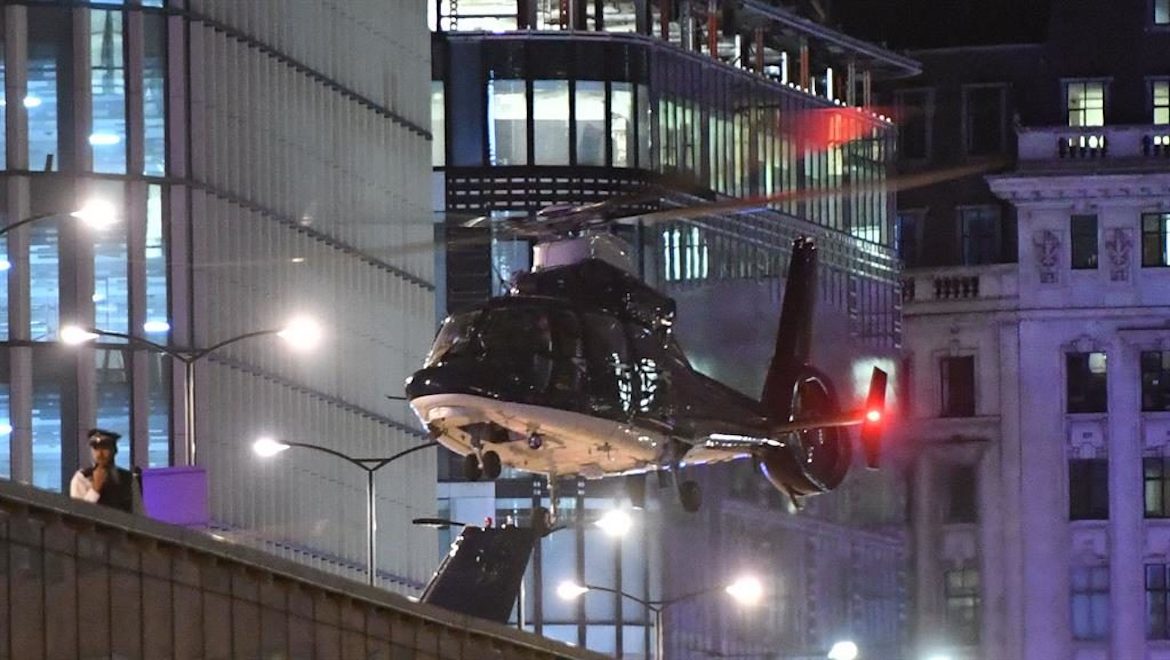
While some Australian states have upgraded their fleets of police helicopters, there are no specifically designed and built helicopters at the disposal of Australian police dedicated for the sole use of tactical response teams.
Highly trained police tasked to respond to terrorism and armed offenders in Australia must rely on a helicopter being available to undertake training or respond to an incident. Simon Grieves, a former member of the WA Police Tactical Response Group (TRG) and now proprietor of Ares Concepts, a firm that specialises in training and consultancy for high risk security operations, has advised that during his time with the TRG, the “WA Police Air Wing did not have the resources to provide full and capable air support to enable the TRG to respond quickly to a terrorism incident. And that situation has not changed”.
Having dedicated resources is an essential prerequisite for any specialised group, particularly one involved in handling highly dangerous situations. Helicopters specifically chosen to meet the needs of tactical response police teams and allocated solely to them would enable those teams to train regularly in their use and gain a better appreciation of the capability and limitations of the machines – a lesson I learned in the Army.
This also has an impact on the time available for specialist tactical police to train in the use of helicopter movement, insertion and recovery. Grieves remembers that: “the limited capability of available aircraft resulted in the number of police and equipment to be deployed being reduced or not being available for training purposes due to other operational commitments”.
But there are two other critical elements related to the dedicated allocation of helicopters. The pilots must also be trained and constantly practice entering and leaving a hostile environment, including under sustained fire. Military history contains many examples of untrained pilots panicking when coming under fire for the first time and aborting their mission, discharging their cargo prematurely or crashing. Special operations police should not have to rely upon rescue or ambulance helicopters flown by pilots untrained in handling high risk situations to deploy to dangerous environments.
And it must not be assumed that future terrorist incidents in Australia will involve only one armed offender holding people hostage. An armed group operating in separate locations within a city or area should be anticipated and planned for which would require the commitment of multiple helicopters to carry sufficient armed police to the objective, taking into consideration potential loss of aircraft and police to ground fire.
Any helicopter used by police responding to such incidents must therefore have the ability to withstand the impact of sustained fire from heavy calibre bullets received from multiple shooters.
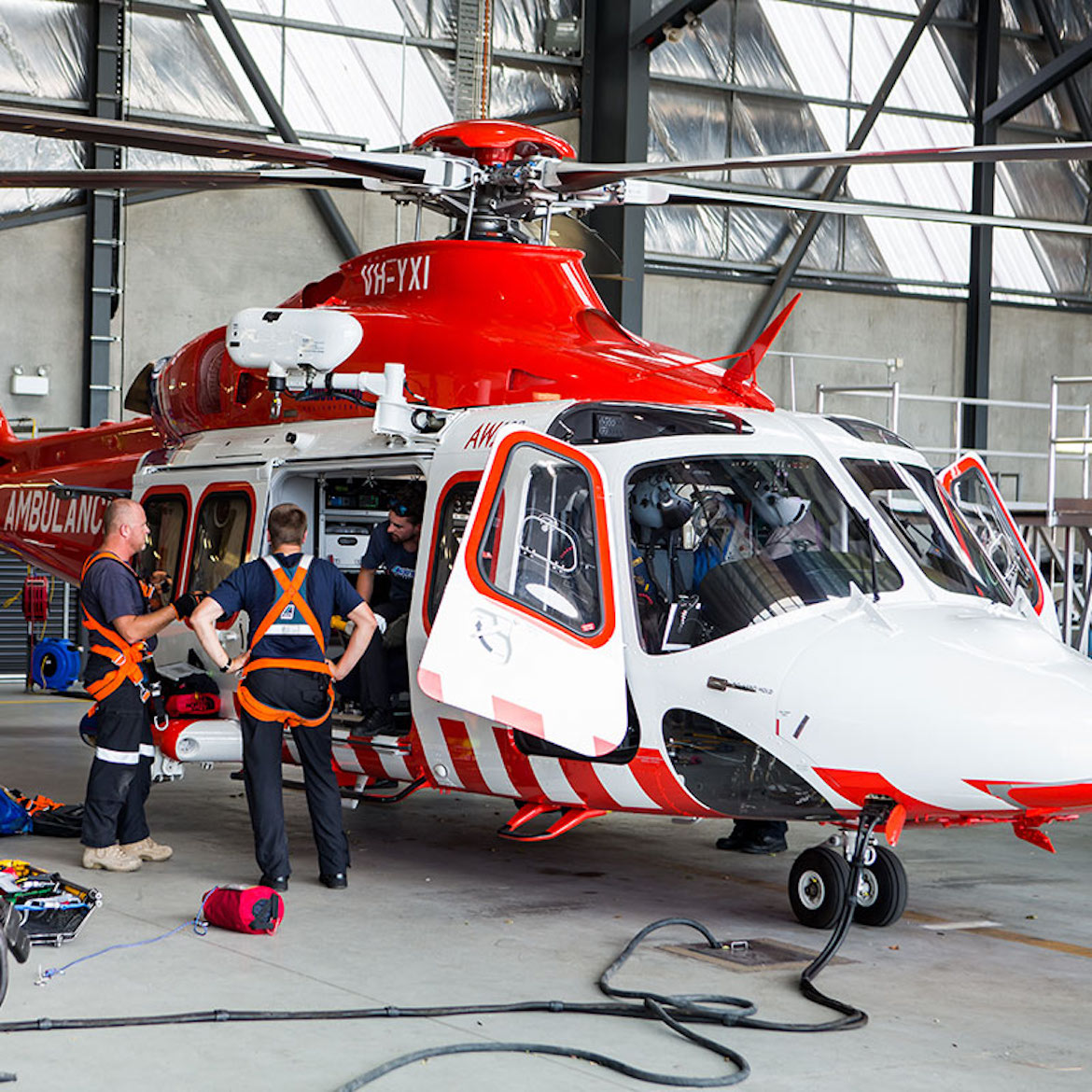
In the past, there has been no national coordination of the acquisition of helicopters by Australian police services. This has resulted in various types of helicopters being operated by each of the police organisations that operate rotary aircraft fleets.
As table below shows, the number and no doubt capability and availability of helicopters for Australian police services are inadequate to handle a terrorist incident or armed offender.
Helicopters in service with Australian police services
AFP 0
NT Police 0
NSW Police 5
QLD Police 5
SA Police 0
Tasmania Police 0
Victoria Police 4
WA Police 2
What is needed is a national approach to the acquisition of helicopters for use by tactical response police.
Having each police force equipped with one type of helicopter dedicated to responding to a terrorist incident or armed offenders would save on acquisition, maintenance and training costs. A solution to this issue may be found in Project LAND 2097 Phase 4, which involves acquiring 16 special operations support helicopters for Australian Army special forces.
That project has not been formally approved by the Australian government but was identified as a priority for future defence spending in the 2016 Defence White Paper. Consideration should be given to linking the acquisition of police helicopters to Project LAND 2097 Phase 4. Linking any police helicopter acquisition programme to that project would enable a greater number of machines to be assembled in Australia. Perhaps a national contract could be issued for covering their maintenance as occurs with other large projects
and national training programmes to be developed and delivered involving Army special forces and tactical police teams.
The helicopters would supplement existing fleets where they exist and be available primarily for high risk situations and terrorism incidents that require the use of helicopters to quickly and efficiently deploy heavily armed tactical police.
The number of helicopters to be acquired for each state and territory should allow a core group of three aircraft to be available at all times. It is recommended that perhaps four helicopters be acquired for each police service in Australia, amounting to 32 rotary aircraft. Acquisition of the helicopters should be undertaken by the Australian government but in consultation with each of the states and territories.
The states and territories participating in the helicopter program would be responsible for their maintenance and operational costs over the life of the aircraft. However, given that many police forces do not have any helicopters due primarily to cost, then maintenance and operating costs should be funded entirely by the federal government or shared jointly with a participating state or territory government. This will avoid the situation that occurred when two fixed-wing aircraft were returned by the Northern Territory police because it could not afford to operate them.
Commonwealth funding would also ensure that the helicopters would be available to support AFP and Australian Border Force operations involving high risk insertion near or onto suspected drug and people smuggling boats.
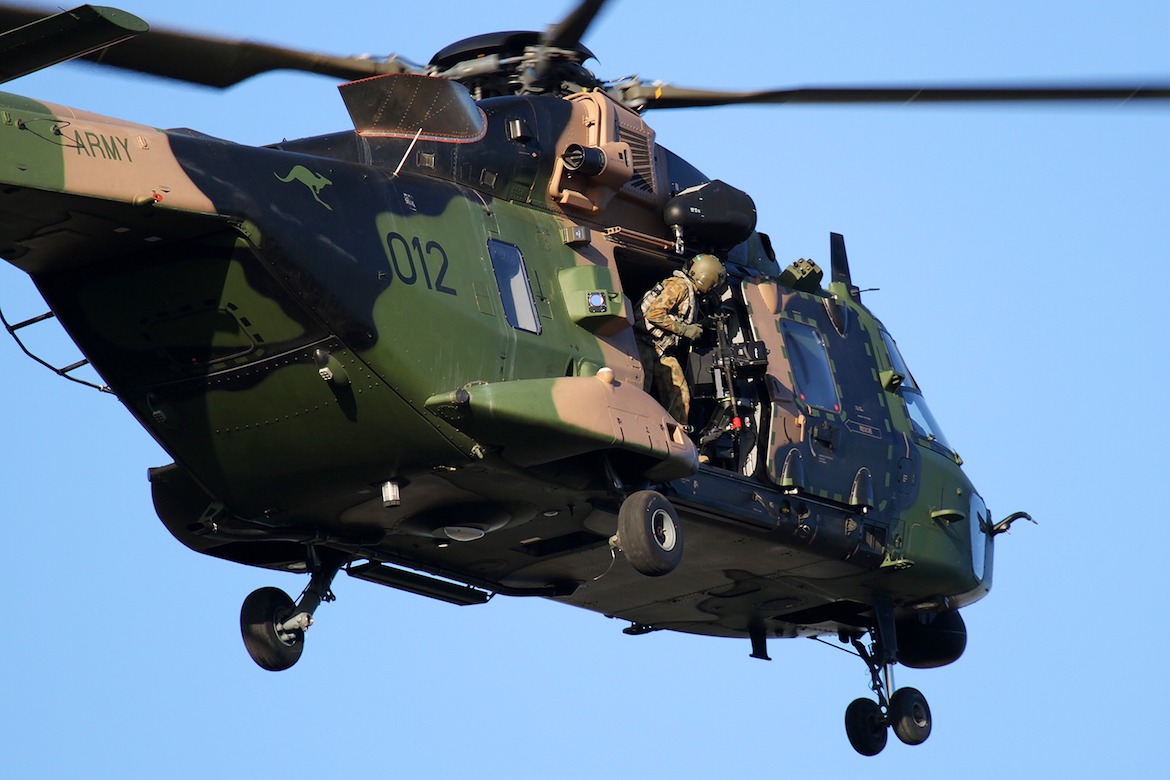
Chris Douglas is a Director at Malkara Consulting Pty Ltd in Australia. He is a former member of the Australian Regular Army and Australian Federal Police (AFP) for 31 years. Douglas is a long-time follower of crime and terrorism issues and military developments, with a focus on intelligence, ground and air systems.
This story first appeared in the August 2019 edition of Australian Aviation. To read more stories like this, subscribe here.














Trevor Hibbs
says:Well being an ex-Australian Army Aviation Aircraft Handler from 1973-1976, with 161 Recce Sqn at Holsworthy, so I have a little bit of experience in training against armed assaults. The choppers we had back then were the Kiowa, it had no weapons except phosphorus rockets to be fired into the enemy camp, so the F1-11 could drop their bombs, and yes were trained hoe to deal with coming under fire.
Now the choppers that my old squadron have now are awesome the Tiger, fully armed with with mini-guns, rockets, with all the latest hi-tech gadgets and with an air-frame that can withstand hi-caliber small arms fire, hence that is the type of aircraft needed for a terrorist attack.
So I think a better straightly would be, to have a Army Aviation Recce Sqn based at every major city with Tigers and supported by Support sqn 171 Sqn that curry the a SAS Regiment. Thus, let the police asses the situation first, if its just a hostage situation, the Police can, anything more serious, bring in the ADF.
Rocket
says:Terrorism…??? You mean that thing our politicians have used to pass 82 laws severely restricting our freedom as citizens and turning us into a Police State, when only being responsible for 1/9th of 1% of the murders in Australia in the last 15 years (and some of those are a stretch to classify as terrorism).
Every authoritarian State has to have an enemy to get it’s population to agree to the passing of laws that restrict their freedom. Ours has done this more than any other. Domestic Violence is far more dangerous being responsible for 100-150 deaths per year but not a single law. Helicopters were never conceived of in Police Forces to stop ‘terrorism’.
Rod
says:I understand that the helicopters used in QLD for policing duties are maintained, serviced and piloted by Surf Lifesaving.
Jason
says:Re. the AFP with zero helicopters, I assume that for national security requirements in Canberra or an incident that the NSW Police moves a helicopter to Canberra Airport to support the AFP? Also Army would do the same with a Blackhawk (soon NH-90) from their Holsworthy base outside Sydney along with their tactical assault group.
Adrian P
says:Reminds me of the film “Blue Thunder”.
Two good things about it, firstly it was only a film and the other is the hero destroyed the helicopter as being inappropriate.
Nick
says:This is pretty ridiculous. How did it get past the editor?!
We should have a national fleet of 32 helicopters dedicated to a large scale terrorist assault (nothing of the sort having ever occurred here) – where the national fleet of machines dedicated to normal, everyday, non-fantasy policing only amounts to 16? These anti-terrorist machines should “have the ability to withstand the impact of sustained fire from heavy calibre bullets received from multiple shooters”. What planet are you on mate!
He then goes on to say the acquisition and maintenance would be funded by states and territories, except where they couldn’t afford to and the feds should fund it. Astonishingly, he acknowledges NT had to give back their air assets because they were too expensive to operate. You think they want to pay for a fleet of armoured battlefield assault helicopters to FLIR drug houses, move sniffer dogs, and track highway pursuits?
You think anyone wants to pay for this boys-own GI joe fantasy? No. Hence the premise for this article is correct. For good reason. Move along.
Come on AA! This is a very silly article. We expect better from our leading industry publication.